Transdermal cetacean tags are deployed either using a pneumatic air gun or a long fiberglass pole. The tag electronics are cast in epoxy then encased in a stainless steel housing for robustness. Etched rings on the housings provide a visual means to measure the amount of tag migration out of the whale. A “stop plate” at the distal end of the tag limits the depth of the implant. A variety of different stop plate styles are available.

| Model | Tracking | Sensors | Sensor Data Archive | Transmitted Data Products | Life (days) | L x D (mm) | Weight (g) | |||||
| Time Series | Dive Behavior | Haulout Behavior | Temperature | Mortality | ||||||||
| Histos | Profiles | |||||||||||
SPOT-177R | Argos | Temp | ✓ | 130 | 98 x 22 | 140 | ||||||
SPOT-177S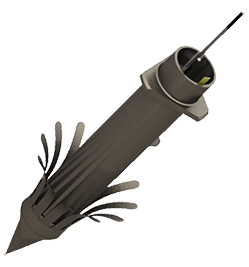 | Argos | Temp | ✓ | 130 | 145 x 22 | 180 | ||||||
SPOT-303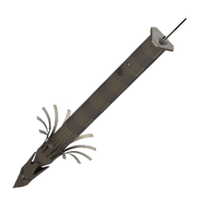 | Argos | Temp, Light | ✓ | 540 | 300 x 24 | 390 | ||||||
SPOT-372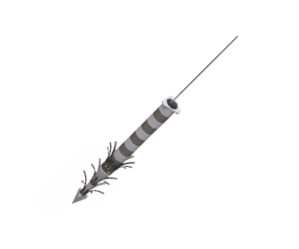 | Argos | Temp, Light | ✓ | 540 | 293 x 24 | 390 | ||||||
SPLASH10-302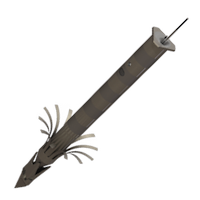 | Argos | Depth, Temp, Light | ✓ | ✓ | ✓ | ✓ | ✓ | 190 | 300 x 24 | 390 | ||
SPLASH10-373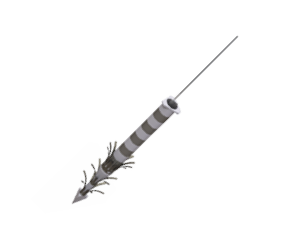 | Argos | Depth, Temp, Light | ✓ | ✓ | ✓ | ✓ | ✓ | 190 | 293 x 24 | 390 | ||
| Model | Tracking | Sensors | Sensor Data Archive | Transmitted Data Products | Life (days) | L x W x H (mm) | Weight (g) | |||||
| Time Series | Dive Behavior | Haulout Behavior | Temperature | Mortality | ||||||||
| Histos | Profiles | |||||||||||
Life estimates rely on programming, battery variability, temperature, power settings, features utilized, etc., and may increase or decrease based on your deployment. Please contact your technical sales consultant for more information. It is important to note that when tagging cetaceans, deployment length is typically limited by tag retention rather than battery capacity.
Most SPLASH tags come in a 10 (does not contain Fastloc) or BF (does not contain depth) version. Ask your technical sales consultant which tag best meets your research goals.
This is a small representation of our available tags. Tag features and specifications subject to change without notice.
